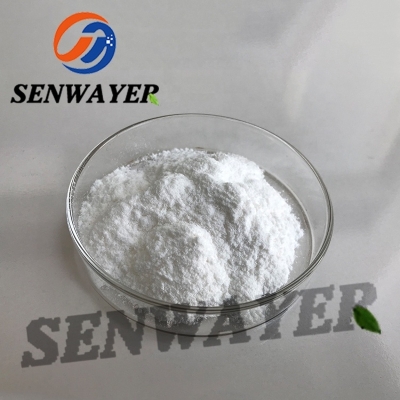-
Categories
-
Pharmaceutical Intermediates
-
Active Pharmaceutical Ingredients
-
Food Additives
- Industrial Coatings
- Agrochemicals
- Dyes and Pigments
- Surfactant
- Flavors and Fragrances
- Chemical Reagents
- Catalyst and Auxiliary
- Natural Products
- Inorganic Chemistry
-
Organic Chemistry
-
Biochemical Engineering
- Analytical Chemistry
- Cosmetic Ingredient
-
Pharmaceutical Intermediates
Promotion
ECHEMI Mall
Wholesale
Weekly Price
Exhibition
News
-
Trade Service
Hospital managers must recognize the impact of price reforms on public hospitals’ performance appraisal, discipline structure, and operation management.
The pilot program of medical service price reform is finally here!
On May 21, the 19th meeting of the Central Committee for Comprehensively Deepening Reform was held.
The meeting reviewed and approved the "Pilot Plan for Deepening the Reform of Medical Service Prices" (hereinafter referred to as the "Pilot Plan").
The price of medical services is the most direct and practical interest issue that the people are most concerned about.
In recent years, the Party Central Committee has deployed and promoted a series of reforms.
Through the elimination of drug additions, centralized recruitment and procurement of drugs, and strengthening of cost control, the prices of drugs and consumables have been reduced, and the burden of medical treatment has also been significantly reduced.
The results have created conditions for adjusting the price of medical services.
At the same time, we also need to realize that the current prices have severely affected the normal operation of public hospitals, and that medical prices have reached the time when they must be changed.
If they do not change, all previous efforts will be lost.
As a hospital manager, he must recognize the systemicity and complexity of medical service price reform, and recognize the impact of price reform on public hospitals’ performance appraisal, discipline structure, and operation management.
Let’s take a look at what are the reforms?
Before interpreting this "pilot plan", let us review two old documents.
The first is the "Several Opinions on Promoting the Reform of the Price Mechanism" six years ago (Zhongfa [2015] No.
28).
The article puts forward overall requirements for the reform of medical service prices: focusing on the goal of deepening the reform of the medical and health system, in accordance with the principle of "total control, structural adjustment, rising and falling, and gradual implementation", actively and steadily promote the reform of medical service prices, and adjust medical services reasonably To ensure that the development of medical institutions is sustainable, the medical insurance fund can bear, and the burden on the masses will not increase.
Secondly, in July 2016, with the approval of the State Council, the National Development and Reform Commission, the Health and Family Planning Commission, the Ministry of Human Resources and Social Security, and the Ministry of Finance jointly issued the "Opinions on Promoting the Reform of Medical Service Prices" (Fagai Price [2016] No.
1431) .
This article marks the full implementation of the reform of medical service prices, puts forward specific goals for 2017 and 2020, and clarifies five reforms to promote classified management, straighten out price comparisons, reform project management, improve pricing methods, and strengthen supervision and management.
Task: Require all price authorities to cooperate with the comprehensive reform of public hospitals to cancel the drug additions, and adjust the prices of medical services simultaneously in accordance with the principle of "total control, structural adjustments, ups and downs, and gradual implementation", with a focus on improving diagnosis and treatment, surgery, and rehabilitation , Nursing, Chinese medicine and other items that reflect the value of medical staff’s technical services, and reduce the price of large-scale medical equipment inspection, treatment and inspection.
Now let’s talk about the "Pilot Plan" released this time.
In a word, it is a further refinement of the above documents and emphasizes how to "land".
The specific content is as follows.
1.
It is necessary to standardize the management of medical service price items and establish a target-oriented price project management mechanism to make medical service price items better priced, better executed, and better evaluated, and better meet the needs of clinical diagnosis and treatment and price management.
2.
It is necessary to strengthen the macro-management of the price of medical services, balance the development needs of medical undertakings and the affordability of all parties, and highlight the key points within the scope of the total amount.
3.
Strengthen classified management based on the characteristics of medical services.
For common projects that are commonly developed, the government should manage the price benchmarks; for complex projects with high technical difficulties, the government should play a good role and respect the professional opinions of hospitals and doctors.
Suggestions to better reflect the value of technical labor services.
4.
It is necessary to establish a sensitive and highly dynamic price adjustment mechanism, and clarify the starting conditions and constraints of price adjustments.
It is necessary to establish a sensitive and highly dynamic price adjustment mechanism, and clarify the starting conditions and constraints of price adjustments.
5.
It is necessary to do a good job in price monitoring, evaluation, supervision and inspection to ensure the stable operation of the price mechanism.
6.
It is necessary to actively and steadily carry out pilot work, and coordinate the promotion of public hospitals' compensation mechanism, graded diagnosis and treatment, medical control fees, medical insurance payment and other related reforms to form a comprehensive effect.
Public hospitals, as the main supply force of my country's medical service system and the main users of medical expenses, should pay attention to the impact of price adjustments on the operation of public hospitals.
What is the impact on public hospitals?
After understanding the content of this reform, let's take a look at the impact on public hospitals and response strategies.
Let me talk about the impact on performance appraisal.
The performance appraisal of tertiary public hospitals has become a yardstick for measuring the high-quality development of tertiary public hospitals, and the performance appraisal of the second-level public hospitals whose results will be announced soon will also play the same role.
Many of these indicators are related to the price adjustment of medical services.
For example, in the operational dimension, medical service income (excluding medicines, consumables, inspection and inspection income) accounted for the proportion of medical income, personnel expenditures accounted for the proportion of business expenditures, energy consumption expenditures of 10,000 yuan, income and expenditure balance, asset-liability ratio, average number of outpatient visits Expenses increase, the average increase in the cost of medicines per outpatient visit, the increase in the average cost of hospitalizations, and the increase in the average drug cost of hospitalizations, these indicators will all be affected by the price adjustment of medical services.
The prices of items that reflect the value of medical staff's technical services, such as diagnosis and treatment, surgery, rehabilitation, nursing, and Chinese medicine, will be increased.
Then the proportion of medical service income will naturally increase, the distributable funds will increase, the proportion of personnel expenditures in business expenditures will also increase, and the balance of income and expenditure will be greatly improved.
Moreover, with the further deepening of policies such as volume procurement, the increase in average cost will gradually be controlled to a reasonable range.
Hospital managers should recognize this change for the better, but they should also recognize that the discipline structure and hospital development are facing more severe tests.
Talk about the impact on the discipline structure of the hospital.
With the gradual deepening of the price of medical services, the subject structure of the hospital will have a greater impact on the assessment results.
In the discipline structure, operating departments that occupy a large amount of resources and have a high proportion of business will benefit more from the price reform.
In 2017, Shanghai carried out a price adjustment after the drug markup was cancelled.
The compensation rate of hospitals was 80% on average, while the compensation rate of many hospitals with relatively large operating departments and strong disciplines was more than 100%.
The impact of the reform of medical service prices on different hospitals is different, especially if the discipline structure does not conform to the price adjustment orientation, it will face the problem of insufficient compensation rate.
This is a problem that hospital managers need to attach great importance to, and need to improve the level of operation and management.
Make up.
What is the impact on hospital operation and management?
How to more reasonably increase medical service income and reduce cost expenditures under the policy permission is a question that every hospital manager is thinking about.
The adjustment of discipline structure cannot be completed overnight.
It is determined by factors such as the economic level of the area where the hospital is located, hospital traditions, medical resources, and hospital culture.
In contrast, operational management has become a more effective way to deal with the impact of price reforms.
At the end of 2020, the state continuously issued documents to put forward clear requirements for the operation and management of public hospitals, including budget, cost, internal control and other aspects.
These management tools are not isolated.
Their effective functioning depends on the correct strategic goals, reasonable business models, and resource allocation on this basis.
Each link includes operations, budgets, costs, and how to be effective.
risk control.
Some hospitals with poor discipline structure, especially those with a low proportion of medical service income and high drug costs, will take measures that affect the long-term development of the hospital in order to score high in the "National Examination".
For example, in order to reduce the increase in drug costs, the use of high-priced drugs and the number of drugs used have been halted across the board, and departments are required to conduct more inspections and tests.
In the short term after the reform of medical service prices, the effect is obvious and the indicators will be improved, but in the long term, it is tantamount to drinking poison to quench thirst.
Under the simplification of treatment, the department's admission and treatment of disease types will also become simple, and the department's sustainable development ability will gradually disappear in this vicious circle.
Hospitals should implement classified and hierarchical management in management, focusing on the key points of maximizing benefits, rather than remedying weaknesses, and achieving equalization.
From the above discussion, it is not difficult to see that when the reform of medical service prices can and must be changed, the biggest difficulty in the reform of medical service prices is public hospitals, and the most affected are also public hospitals.
This reminds hospital managers that they must attach great importance to discipline construction, start with meticulous management, and respond to the impact of the reform of medical service prices.
????????????????????????????????????????????????????????????????????????????????????????????????????????????????????????????????????????????????????????????????????????????????????????????????????????????????????????????????????????????????????????????????????????????????????????????????????????????????????????????????????????????????????????????????????????????????????????????????????????????????????????????????????????????????????????????????????????????????????????????????????????????????????????????????????????????????????????????????????????????????????????????????????????????????????????????????????????????????????????????????????????????????????????????????????????????????????????????????????????????????????????????????????????????????????????????????????????????????????







